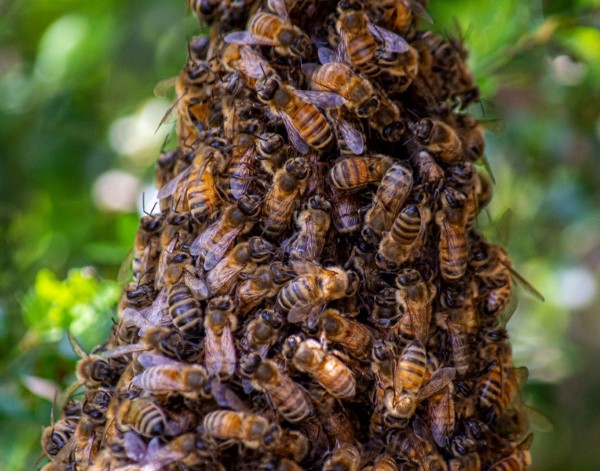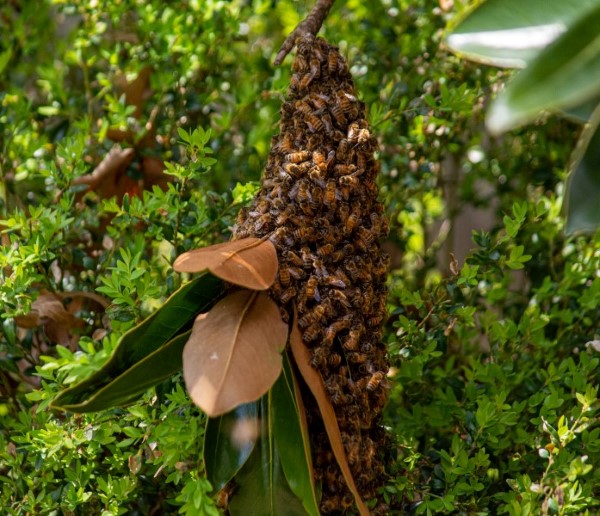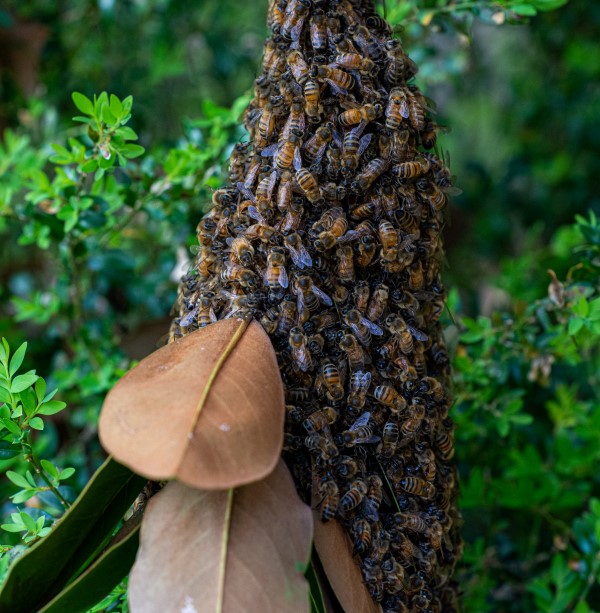
The gradually warming spring days in Middle Tennessee are a sure sign of an impending magical natural event—honeybee swarm season! March is a prime time to begin watching for the tell-tale buzzing clouds that disappear just as quickly as they’re noticed. While it can be unnerving to find yourself in the vicinity of a swarm, it is important to remember that bees are at their least aggressive during this time and pose virtually no threat to people.
A swarm is a very dramatic way for bees to perform the very simple act of hive reproduction. In the spring, pollen becomes more available, and the bee colony actively fills the hive with both brood (baby bees) and honey. With every available space filled to the brim, the queen leaves the safety of her hive in search of a new home. Half of the worker bees follow her on her journey, while the others remain with the hive. In the most basic sense, one hive becomes two.

Photos by Ashleigh Newnes
While the group is searching for a new place to call home, the queen will land, often in a tree or on a fence, but you could see them anywhere! When she comes to rest, all of the worker bees land on her, surrounding and protecting her while a new home is chosen. Bees are quite vulnerable in this state; oftentimes people become alarmed and frightened, and seek remedies that hurt or even kill the swarm. The good news for both people and bees is that swarms very quickly find and move to their new, permanent home, typically in 24–48 hours.
The best thing that humans can do is to quietly and cautiously observe this wonder of nature for the beautiful moments that the bees are there. They will quickly “bee” on their way!

If you do encounter a swarm in an unsafe location, your best bet will be to reach out to the beekeepers association in your county. A quick internet search will put you in contact with many eager local beekeepers who are happy to help give the bees a new home. If possible, avoid contacting exterminators, who are often not knowledgeable about the habits of honey bees and may mistakenly harm the colony.
If you are fortunate enough to encounter this fast flying phenomenon, consider yourself lucky and celebrate these tiny but oh-so-very-important creatures!













